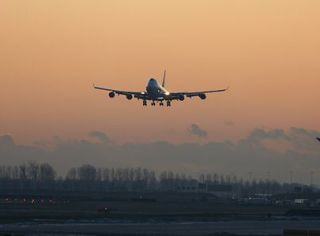 Air cargo delivered in October with a volume increase of 5.5% year-over-year, as 2014 could turn into one of the strongest in terms of revenue for the industry in the last six years, according to WorldACD. Yields dropped 2.3% for the month compared to the same period a year ago, but they increased 2% month-over-month.
Air cargo delivered in October with a volume increase of 5.5% year-over-year, as 2014 could turn into one of the strongest in terms of revenue for the industry in the last six years, according to WorldACD. Yields dropped 2.3% for the month compared to the same period a year ago, but they increased 2% month-over-month.
“Results for January-October reinforce the view that 2014 will become the second best year in revenues since 2008, in spite of a 10.4% yield drop since 2011,” said the air cargo market data provider in its latest report.
China and Northeast Asia carriers showed year-over-year revenue increases above 14% for their U.S. business. Carriers on the South Asia-to-Southeast Asia and U.S.-to-Southern Africa routes were leaders in yield improvement with a 12% increment, but yields suffered almost 10% in the market from Northeast Asia to Southeast Asia, said WorldACD.
Top regions for revenue increase were Southeast Asia for outgoing and U.S. for incoming traffic, both at 12% increases year-over-year.
Revenue from pharmaceuticals transport rose by 9.7%, making for continued growth of its share in total air cargo revenues.
Trans-Pacific market expansion
WorldACD said the trans-Pacific did considerably better than other major markets in October “and the full year’s figures for this market could still improve, given events in the western US ports.”
Over the past three years, trans-Pac “easily outperformed the worldwide average as volumes were up by 12.8% vs. 7.3%,” it added. The year 2013 was poor, but this year the market is vibrant, with year-over-year revenues up 11.4% vs. 5.8% worldwide. The bulk of the business comes from a few countries only: Northeast Asia and China on the western edge, and the U.S. across the water. The eastward flow is 1.6 times the size of the westward flow.
The Pacific States of the U.S form the largest trans-Pac market, with reasonably well-balanced outbound/inbound flows. Of the 10 largest trans-Pac markets, Australia shows the biggest imbalance, outbound volumes being only 24% of inbound. The best balanced market in the top 10 is Northeast U.S., where the outbound flow is 76% of the inbound flow.
In yields, imbalance is the norm as well: westbound yields are only 60% of eastbound yields. The top markets show less yield decline than the smaller ones. Nine of the 50 largest origins and destinations (O&D) bucked the yield trend of the last three years: their yields were higher in 2014 than three years ago, remarkable given the worldwide trend. Chief among them was Northeast China to the American Midwest (+9.4%) and Southern U.S. to Australia (+5%). The best yield performance came from a small market, though: outbound New Zealand, recording a growth of 17% year-over-year for specific cargo such as perishables.
Carriers from the Middle East and Europe play a role in the markets between Asia-Pacific and the Americas, mostly through transport via their home bases. Their volume shares may be small, but they increased considerably, to the detriment of the shares of Asian and American carriers. The “non-Pacific” airlines more than doubled their share from Asia-Pacific to the U.S., and in the large market from Asia-Pacific to U.S. Midwest, the revenue increase of 8.6% went to them completely. The China-U.S. market brought some consolation for U.S. carriers, which jointly increased their yield in this market with 6%.
Photo: Magnus Back




